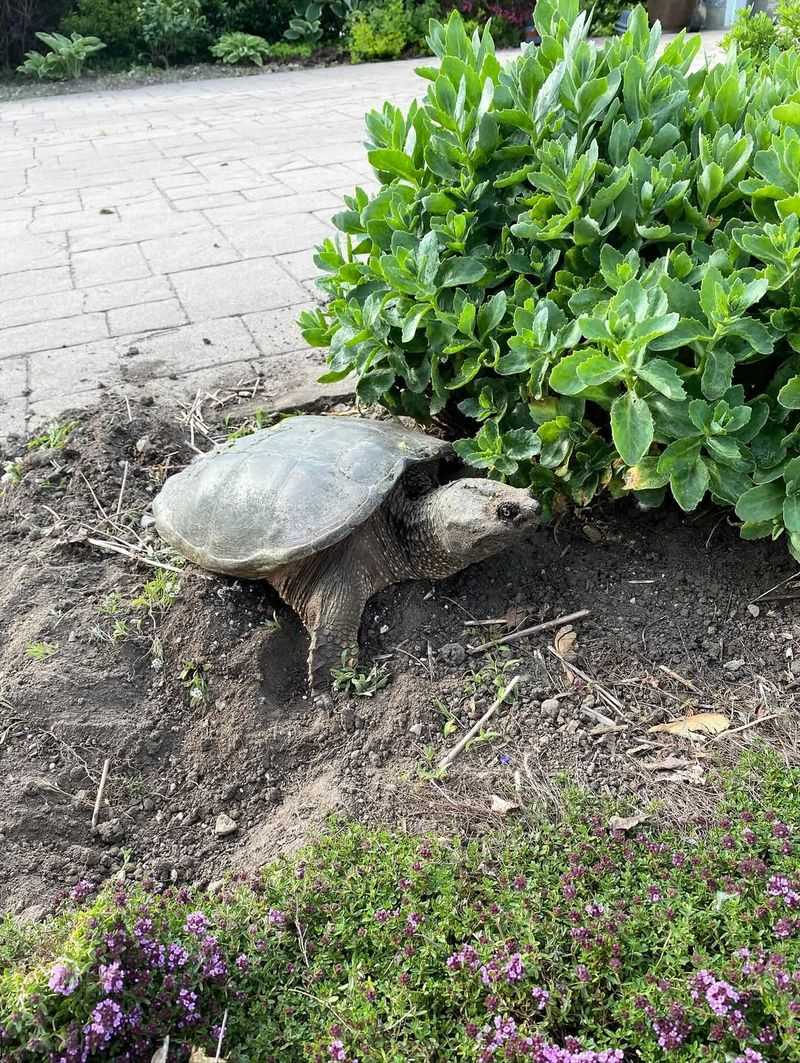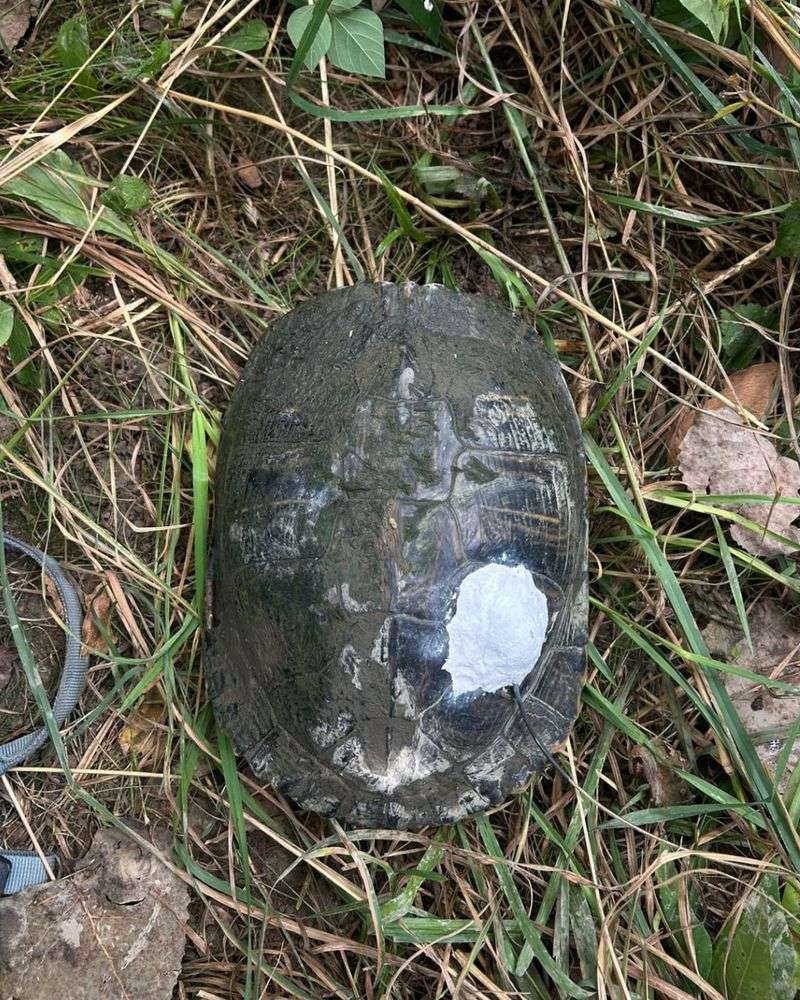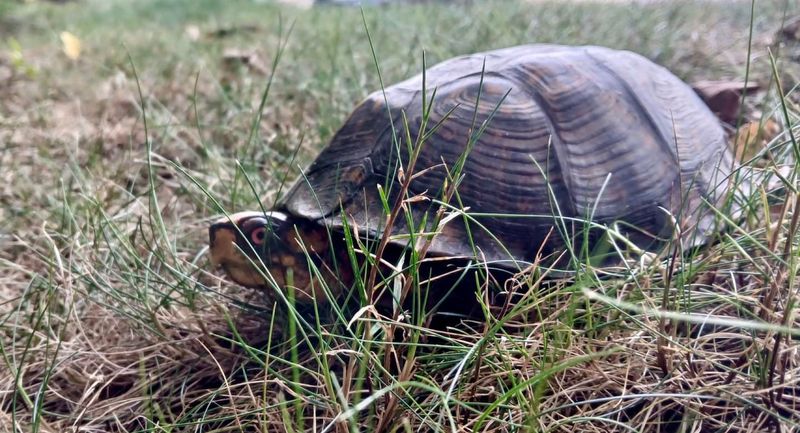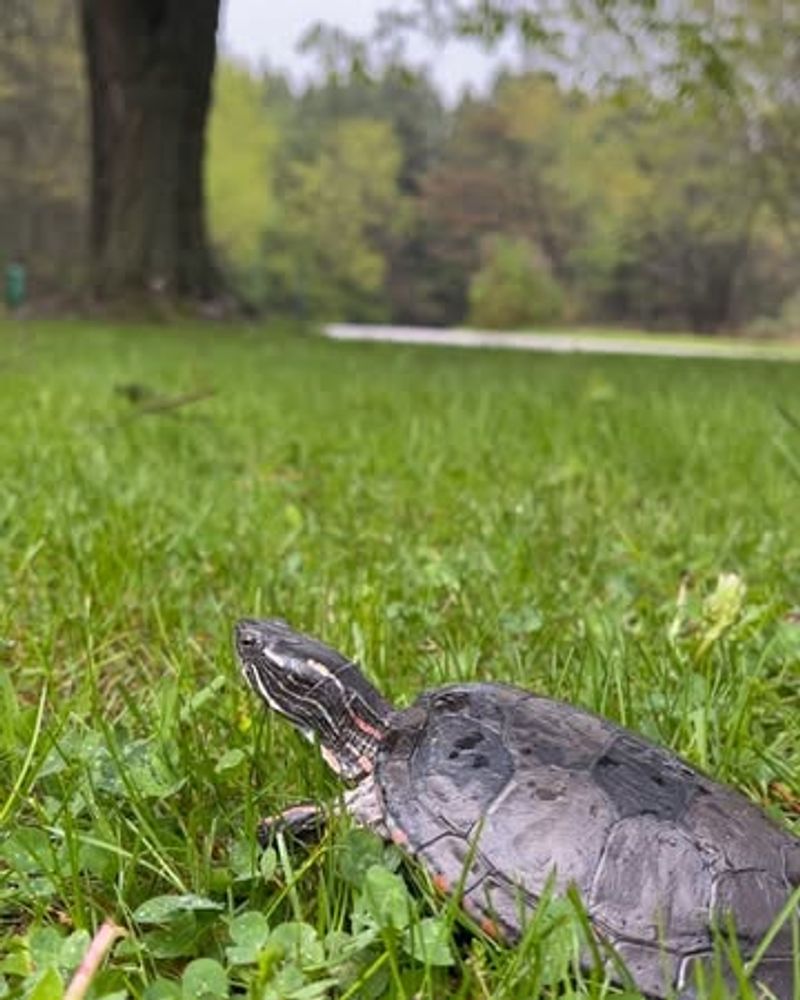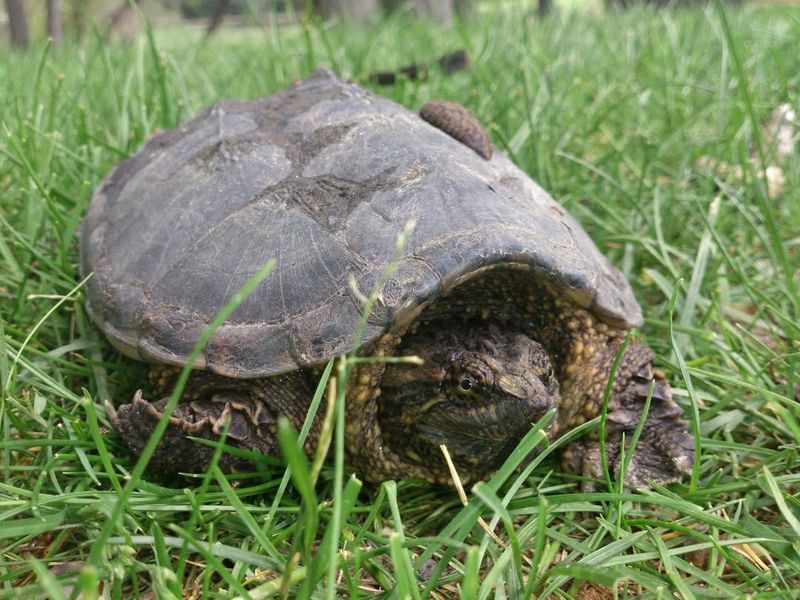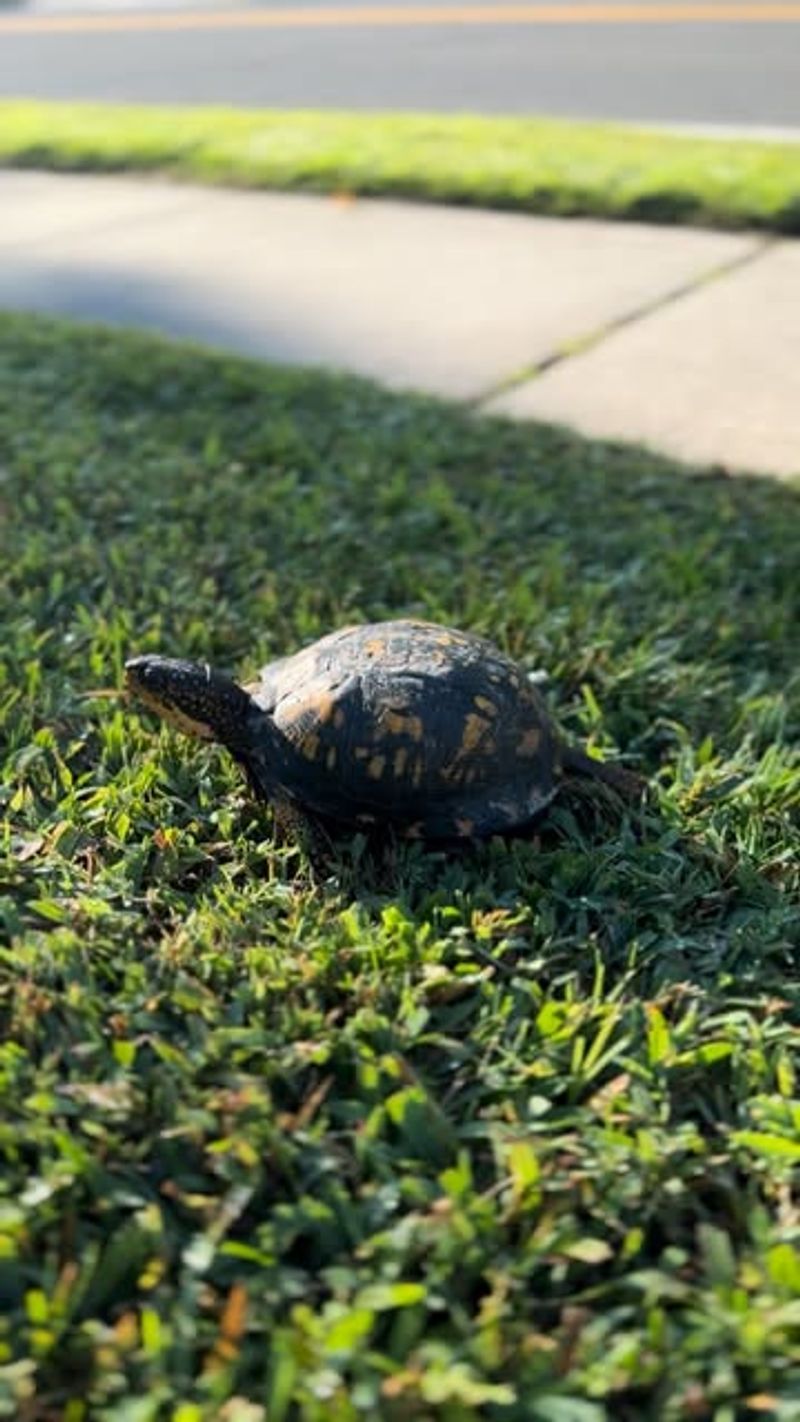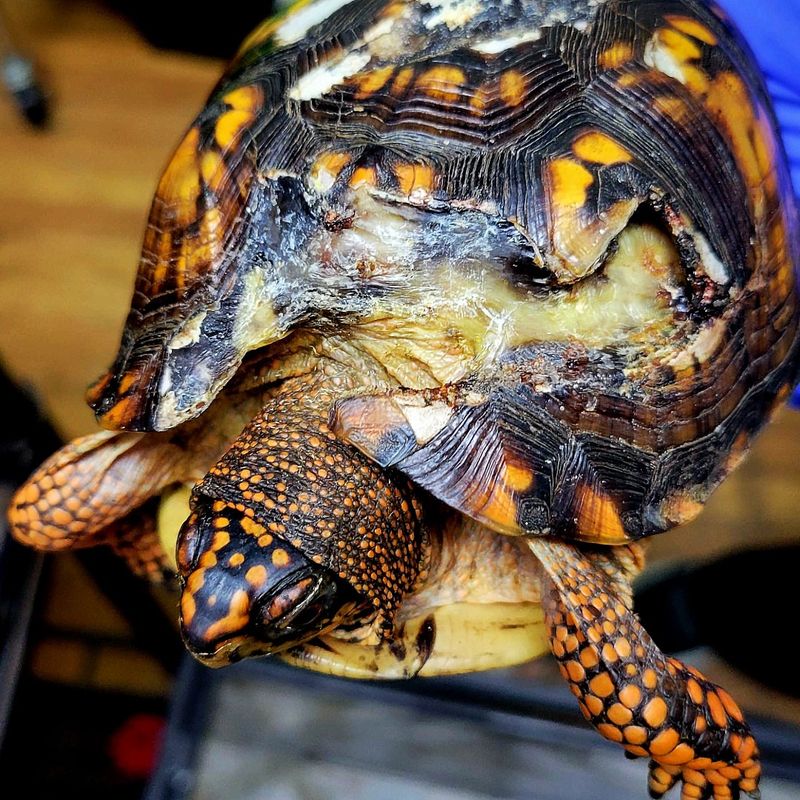Finding a turtle wandering through your Texas yard isn’t as unusual as you might think. With our warm climate, seasonal rains, and mix of grasslands and wetlands, turtles often travel between water sources or search for nesting spots.
Knowing how to respond can protect both the turtle and your garden while keeping your yard safe for everyone. Here’s what I recommend doing when you spot one of these shelled visitors.
1. Observe From A Safe Distance First
Your first instinct might be to get closer, but giving the turtle some space helps you assess the situation safely. I’ve seen a few wander through my own yard, and watching quietly lets you figure out what species it is and whether it seems healthy.
Most turtles aren’t aggressive, but some like snapping turtles can bite if they feel threatened. Staying back also prevents you from accidentally startling it into your garden beds or toward the street.
Take a moment to notice its size, shell pattern, and behavior before deciding your next move.
2. Identify The Species If Possible
Knowing what type of turtle you’re dealing with makes a big difference in how you should handle it. Texas is home to box turtles, red-eared sliders, and occasionally snapping turtles, each with different needs and temperaments.
Box turtles are land dwellers with dome-shaped shells and often have yellow or orange markings. Sliders have flatter shells and prefer being near water. Snapping turtles have rough, ridged shells and long tails.
If you’re unsure, snap a photo and look it up online or contact a local wildlife group for help with identification.
3. Check For Injuries Or Signs Of Distress
Once you’ve identified the species, look for any obvious injuries like cracks in the shell, bleeding, or unusual lethargy. Healthy turtles move steadily and keep their eyes open and alert.
For me, the best thing to do first is scan for damage without touching the animal. If you spot injuries, the turtle may need professional care from a wildlife rehabilitator.
Also check if it seems stuck, overheated, or unable to move properly. Texas heat can be brutal, so a turtle sitting motionless in direct sun might be in trouble and need shade quickly.
4. Provide Temporary Shade And Water Access
Turtles can overheat quickly during our scorching Texas summers, especially if they’re crossing open lawn areas. Creating a shaded spot nearby gives them relief while they rest or reorient themselves.
You can also set out a shallow dish of water—emphasis on shallow, since not all turtles are strong swimmers. This helps them rehydrate, which is particularly important during dry spells when natural water sources shrink.
Position these near where you found the turtle, but away from direct traffic areas in your yard to keep them safe from pets or foot traffic.
5. Keep Pets And Children At A Distance
Dogs and cats naturally get curious about anything moving in the yard, but their interest can stress or harm a turtle. Even friendly pets might paw at or mouth a turtle, which can injure both animals.
Children also need gentle reminders to look but not touch. Turtles can carry salmonella, and handling them without proper handwashing afterward poses health risks. Plus, frightened turtles may retreat into their shells and refuse to move for hours.
Keep everyone at least a few feet away and use the moment as a teaching opportunity about respecting wildlife.
6. Avoid Relocating Unless Absolutely Necessary
Many people assume they should move turtles to a nearby pond or park, but this can actually harm them. Turtles have home ranges they navigate using memory and environmental cues, so relocating disrupts their survival patterns.
Box turtles especially stay within small territories their entire lives. Moving them even half a mile can leave them disoriented and unable to find food, shelter, or mates.
Only relocate if the turtle is in immediate danger—like heading toward a busy road—and even then, move it just a short distance in the direction it was already traveling.
7. Make Your Yard Turtle-Friendly Long-Term
If turtles visit your yard regularly, consider it a compliment—it means your landscape offers something they need. You can encourage beneficial wildlife by maintaining a corner with native plants, leaf litter, and brush piles for shelter.
Avoid using pesticides and herbicides, which harm turtles directly or eliminate the insects they eat. A small, shallow water feature also helps, though make sure it has easy entry and exit points.
Leaving some areas a bit wilder rather than manicuring everything creates natural corridors that turtles and other wildlife use to move safely through neighborhoods.
8. Contact Wildlife Experts If Needed
Sometimes a situation calls for professional help, especially if the turtle is injured, appears sick, or is a species you can’t safely handle. Texas has wildlife rehabilitation centers and hotlines specifically for these situations.
Snapping turtles, for instance, require experienced handling since they can bite with surprising force. If you’re uncertain about what to do, a quick call to local animal control or a wildlife rescue provides guidance.
They can also advise whether the turtle should stay put or needs intervention. Having their contact information saved can make future wildlife encounters much easier to manage.


